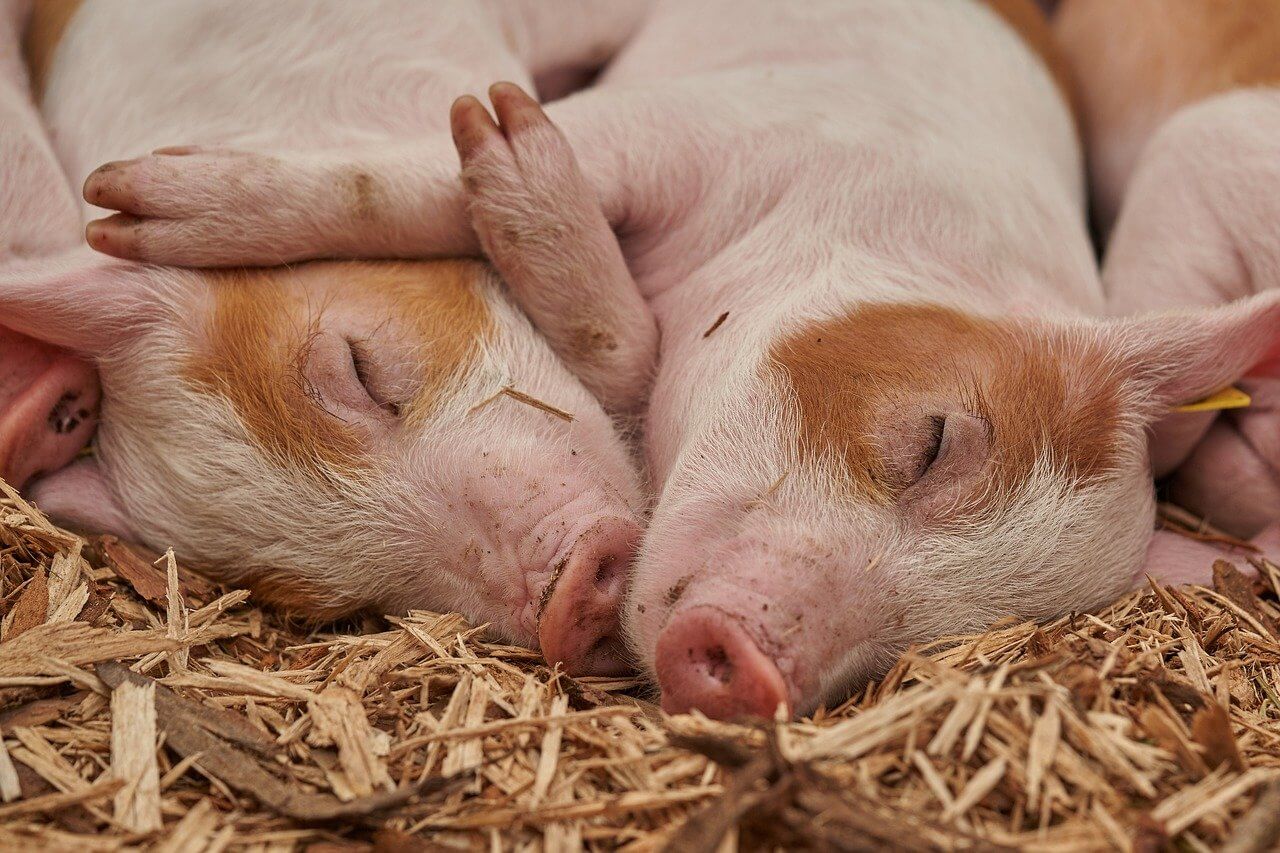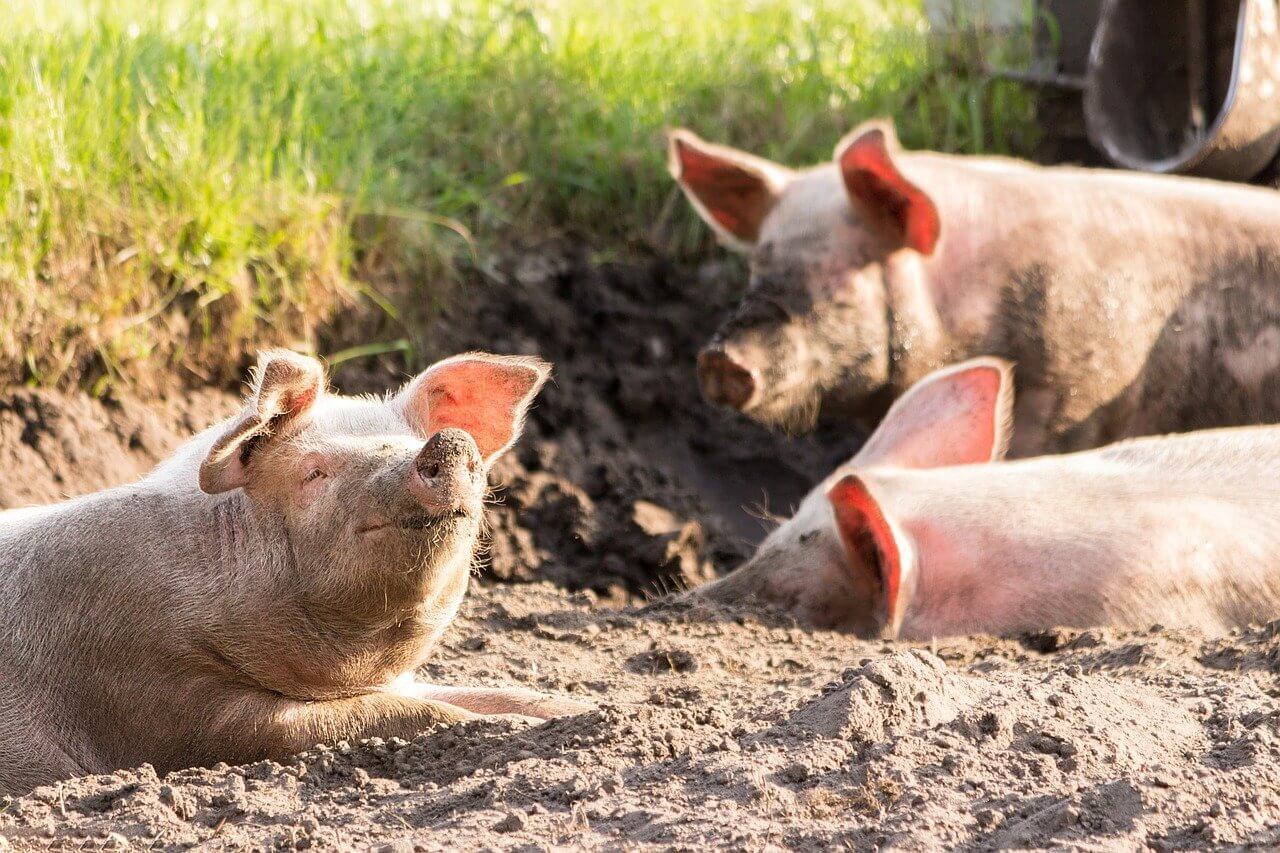Pork is an excellent source of protein for you and your family, or if you want to make a profit from raising pigs, you can sell piglets, breeders and of course meat. When using pigs for meat production, you get a great deal more for your investment. Another advantage of raising pigs for meat is that you will know exactly what they are eating, so you will have complete control over the purity and quality of the meat.
In this article, we provide smart tips, ideas and information on taking care of pigs at your farm or homestead. Read on to learn more on how to raise pigs.
What You'll Learn Today
Why Raise Pigs?

Of course, meat production is one of the main reasons to raise pigs (here’s our article on how they are slaughtered), but you may be surprised to know that they can be helpful around the farm in a number of ways.
Pigs naturally like to root and dig, and many people think of this as a problem; however, if you’re clever you can turn it into a benefit.
Pigs can really help you to clear the land on your small holding. If you have an area that you would like to use for a garden, but it’s covered with briars, weeds and grass, that’s the place you want to put your pig pen.
Pigs have a healthy amount of respect for electric fences, so it’s easy to fence off areas like this and put your pigs to work while you fatten them.
In addition to clearing the land, your pigs will fertilize it while they live on it. When you delegate the heavy digging, tilling and fertilizing to your herd of pigs, you can enjoy the best garden ever in a short period of time.
How To Take Care Of Pigs

In addition to being very valuable farm animals, pigs are rather pleasant to be around. They are cute and smart and quite easy to care for (although they may be aggressive as well).
You don’t have to exercise them or even turn them out for the day. You don’t have to gather them up in the evening and bring them in.
Furthermore, you don’t need to share them or milk them. All you need to do is provide them with a safe, secure and clean environment and plenty of food and fresh water.
When you’re considering raising pigs to produce meat, you want to clarify a few things with yourself. Determine how much meat you will need so that you will know how many pigs you will need.
Decide whether or not this number is realistic by evaluating the amount of space you have to keep them. Think about what and how you will feed your pigs and consider whether you have good access to a qualified veterinarian should you need one.
Fencing challenges are less with pigs than they are with some other sorts of farm animals. Pigs are social animals, and they like to stay together in a group or herd, so if they have everything they need in terms of comfort, food and water, they are very likely stay put with minimal fencing.
Because pigs are smart, they can learn to respect boundaries, so you don’t need to contain them as you would a bull or some other powerful and headstrong creature. Instead, you can just provide them with a visual barrier, such as temporary construction fencing, backed up with a couple of strands of electric wire around the base.
The pigs will see the construction fencing and get the message from the electric fence, so they will be unlikely to challenge your fencing set up as long as they are content within the enclosure. This makes it easy to move them from one place to another on your farm as you need to clear land.
Generally, pigs hoof care is not an issue and is practically not needed; however, there may be reasons why you may want to trim their hooves from time to time.
How Much Space Do Pigs Need?
You won’t need to give your pigs a huge amount of space in their mobile pen. Piglets and shoats (young pigs) need about 8 square feet each. Of course it is also possible to keep pigs “free run” by allowing them larger pasture space, but this is not absolutely necessary.
Pigs spend a great deal of time resting and eating, so a smaller space is adequate for pigs kept in a mobile pen or those kept only seasonally. If you’re simply keeping a small herd on a seasonal basis rather than attempting to keep a breeding boar and sows on site, a smaller enclosure will do.
Pigs attain optimum growth during warm weather. When the temperature stays around 70°F they will experience optimum weight gain.
For this reason, it’s a good idea to acquire 50 pound shoats in the springtime and keep them through the summer. With good weather conditions and feeding, they should attain a size of 250 – 280 pounds by mid autumn.
Note that if you don’t plan to move your pigs pen around, you should give them more space. More room makes manure management easier and reduces extreme damage caused by pigs’ rooting behaviors. If they have a large pasture or wooded area to live in, they’re less likely to dig big holes and create muddy quagmires.
If you do decide that you want to keep breeding stock on site and raise pigs all year, you’ll need to set up shelter that provides cooling and heating.
Piglets (less than 50 pounds) especially need help staying warm. After a pig has attained a size of 150 pounds, it will need assistance staying cool enough.
How Fast Do Pigs Grow?

Pigs grow very quickly. If you start off with a pig weighing 20 pounds, you can expect it to gain as much as 280 pounds in only 3 or 4 months with a good diet. You’ll want to feed a good quality of pig ration; provide good hay and pasture, and you can also include kitchen scraps as long as your kitchen scraps don’t include junk food or meat.
Pig Terminology
When discussing pigs’ sizes, genders and ages, you’ll want to sound as if you know what you’re talking about. Here’s a handy listing of common pig terminology:
- Swine: A general term used to refer to all pigs.
- Hog: This term can be used when talking about pigs of any gender or status weighing more than 120 pounds.
- Boar: This is a mature, intact male hog.
- Barrow: This is a boar that has been castrated. You may hear this type of hog referred to as a “bar”.
- Sow: This is a female hog that has had at least one litter of piglets.
- Gilt: This is a female hog that has not had any piglets.
- Shoat: This is the term for a pig that has been weaned.
- Pig: This is a baby pig that has not been weaned.
- Piglet: This is a very young baby pig, newborn to a few days old.
What Kind Of Pigs Should You Get?
Choosing the right breed of pig for your purposes is very important. In general, modern commercial breeds are always good choices; however, crossbred pigs may actually tend to put on weight more quickly and efficiently than purebred pigs.
There are far too many different breeds of pigs to cover in the scope of this article, but the National Pork Board provides an excellent resource for studying breeds of pigs.
Here is also our short guide on breeding pigs in general.
How Much Do Pigs Sell For?

On average, market pigs sell for about $3.50 a pound. When thinking about how much to charge for your pigs, you should also think about your costs. If you buy a shoat at a weight of 80 pounds, you can expect to pay approximately $280 for it.
In that pig’s lifetime, it will consume great quantities of grains such as:
In fact, you can expect your pig to eat about 225 pounds of these grains, as well as hay, pasture and household and garden scraps. You’ll want to take into account the costs of all of these feeds when setting a price to sell your pigs.
Other expenses to keep in mind include costs for fencing, housing, water, transport, heating and cooling as needed and veterinary attention.
Here’s our latest post with the most common questions and myths about pigs, and also this one about starting a pig business.
Don’t ever think about raising pigs if you cannot stand the weird smells from their poops and urine, which are super dirty as well.
As a pig, I can recognize myself in this post.
Thank you for all the best comments.